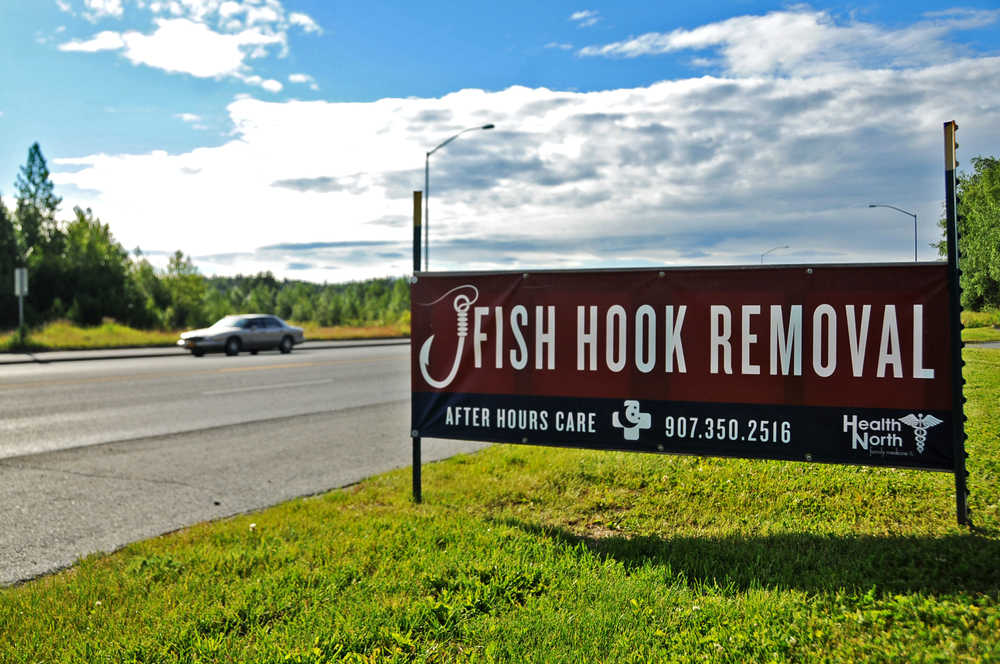Many fishermen are familiar with the feeling of getting a fishhook stuck in their hand, arm or elsewhere.
Usually, it’s a quick fix if the fisherman can jump in a car and head to an emergency room or to a clinic. However, if they are out in a boat on Cook Inlet or nine miles out on a remote river, professional medical help may not be so immediately available.
Being up to date on tetanus shots is a good preventative measure, said Dr. Rod Hall, a physician at Health North Family Medicine. Based on the kind of injury, the person will need a tetanus booster in the future — if it’s a clean cut, 10 years is fine, but if it’s not, five years is better, he said. Tetanus shots are available, but there is no antitoxin and the disease can be deadly.
“Basically, if you’re washing dishes in hot soapy water and you cut yourself on a knife in the water, that’s a clean cut,” Hall said. “Everything else is a dirty cut.”
Health North Family Medicine on the Kenai Spur Highway in Soldotna offers 24/7 fish hook removal service, ranging from $450–$1,000, based on the level of severity, and accepts various insurance plans. Hall said he uses a method to withdraw embedded fish hooks that does not involve cutting the hook or bending the barb and can remove it in about a minute. He estimated that the clinic might see eight to 10 cases per week.
He inserts a larger needle following the hook and covers the barb, then withdrawing both together. That way, the barb doesn’t have a chance to damage anything else on its way out, like nerves, veins or other structures. That’s one of the biggest risks in yanking out the hook, he said.
“Nerves don’t regenerate,” Hall said. “They’ll grow (a little bit), but that’s it.”
If fishermen want to take it out themselves, they should push the hook through the skin and flatten the barb against the hook with pliers before withdrawing it back the way it came out. The downside to that method is that it produces a second puncture, he said.
Some guides who have clients with a fishhook injury will just tell them to finish fishing with the hook in, bring them into town and have a medical professional address it, he said.
There’s always the risk of infection, so carrying gauze and hydrogen peroxide or antibacterial ointment may head off a bigger problem if the wound festers. It doesn’t take up much space, isn’t heavy and can prevent an infection.
One of the biggest preventative measures, though, is to wear shatterproof safety glasses or goggles, he said. A hook in the eye can be benign if it only snags the eyelid, but it can blind someone if it pierces the anterior structure of the eyeball. Some surgeries can fix it, but others may lose an eye, he said.
In some areas on the Kenai, where fishing is crowded, the risk isn’t always from the fisherman — some times it’s from the angler ten feet down the river. Hall estimated that about half the cases of fishhook removals the clinic sees are when someone else hooked his or her neighbor.
“Some people wear sunglasses, but the other part of it is that there’s a weight (on the line),” Hall said. “They make a shatterproof plastic, and it’s best if they go all the way around (the eye).”
Reach Elizabeth Earl at elizabeth.earl@peninsulaclarion.com.

